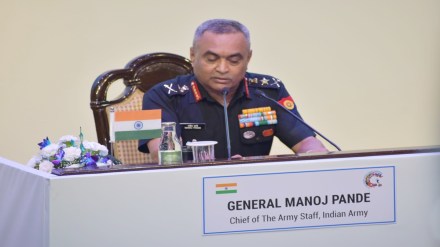The Indo-Pacific region has emerged as a vital focal point in the ever-evolving global landscape. Indian Army Chief General Manoj Pande, in his address at the Indo-Pacific Army Chiefs’ Conference (IPACC), highlighted India’s commitment to ensuring unwavering peace and stability in the Indo-Pacific region. He underlined the significance of respecting the sovereignty and territorial integrity of all nations, even as concerns mount about China’s assertive military actions in the area. The Army Chief reiterated that cooperation among nations can lead to a more peaceful and politically healthy world.
In this context, it’s crucial to recognize that the Indo-Pacific region is not merely a collection of nations but a complex web of interdependencies. These interdependencies underscore the importance of building trust and strengthening cooperation among these nations.
According to the Army Chief, India’s vision for the Indo-Pacific rests on three fundamental pillars: peaceful dispute resolution, the avoidance of force, and adherence to international laws. While countries in the region are working towards a free Indo-Pacific, challenges persist in the form of interstate contests and competitions. These challenges transcend borders, demanding collective responses.
Geostrategic Importance of the Indo-Pacific
The geostrategic relevance and geo-economic significance of the Indo-Pacific nations are undeniable. The region boasts 65 percent of the world’s population, 63 percent of its GDP, 46 percent of the global merchandise market, and 50 percent of maritime trade. It is, undeniably, a pivotal theater on the contemporary geopolitical stage.
Given this, cooperation among the littoral states in areas such as security, connectivity, and economy become imperative. The interconnectedness of these nations is evident in their shared geography and intertwined destinies. The prosperity and security of one nation are intrinsically linked to those of its neighbors.
India, strategically located astride vital Sea Lanes of Communication, plays a key role in the Indo-Pacific discourse. As the region’s linchpin, India has a responsibility to contribute to its peace, stability, and prosperity, the army chief said.
IPACC: A Platform for Collaborative Engagement
The Indo-Pacific Army Chiefs’ Conference is a testament to the commitment of participating nations to collaborate and address regional challenges. It operates on three essential tiers:
Army Chief’s Conclave (Tier One): This tier focuses on discussions about the security dynamics and the macro construct of a synergized strategy for achieving and sustaining peace and stability in the region.
Operational Military Commanders (Tier Two): Military commanders engage in discussions on joint exercises, interoperability, sub-regional perspectives, best practices, and lessons learned. These discussions are instrumental in developing a collaborative roadmap for the future.
Senior Enlisted Leaders (Tier Three): The enlisted leaders, with their extensive field experience and expertise, discuss professional development, leadership, and man management. Their insights provide invaluable perspectives.
In addition to these tiers, bilateral consultations and discussions on the sidelines serve to enhance and broaden Army-to-Army engagement initiatives among participating nations.
International Perspectives
Canada: Speaking to media on the sidelines of the ongoing two-day conclave, Major General Peter Scott, Deputy Commander of the Canadian Army, highlighted the importance of the armies of India and Canada focusing on learning from each other and finding opportunities for joint training and exercises, despite ongoing diplomatic tensions.
“That’s a political issue and we will let the political masters deal with that. The Armies (of both countries) will focus on learning from each other and finding opportunities to train and exercise together.”
United States: US Ambassador to India Eric Garcetti emphasized the need for free, open seas, adherence to the rule of law, prosperity through trade, and mutual trust and cooperation among armies to address conflicts.
US Army’s Chief of Staff General Randy George affirmed the strength of the US-Indian Army partnership and the vital role it plays in maintaining stability in the Indo-Pacific.
In his opening address at the inaugural ceremony, he said: “We do face a challenging strategic environment, but this is nothing new. We have overcome challenges in the past, and we will overcome them together in the future.”
Adding, “The partnership between the US and Indian Army is vital for stability in the Indo-Pacific and the relationship between the armies is strong and growing stronger.”
General George along with 16 other Army chiefs have arrived in New Delhi to attend the Indo-Pacific Armies Chiefs Conference (IPACC).
Chief of 17 Armies is here including: Australia, Bangladesh, Japan, Cambodia, France, Kenya, Malaysia, Nepal, New Zealand, the Philippines, Tanzania, Republic of Korea, the UK, the USA, Vietnam, Tonga, and Timor Leste.
And Representatives of Chiefs from 12 countries have arrived in India. These include: Fiji, Indonesia, Singapore, Thailand, Nigeria, Mongolia, Egypt, Saudi Arabia, Papua New Guinea, Canada, Chile and Brazil.
